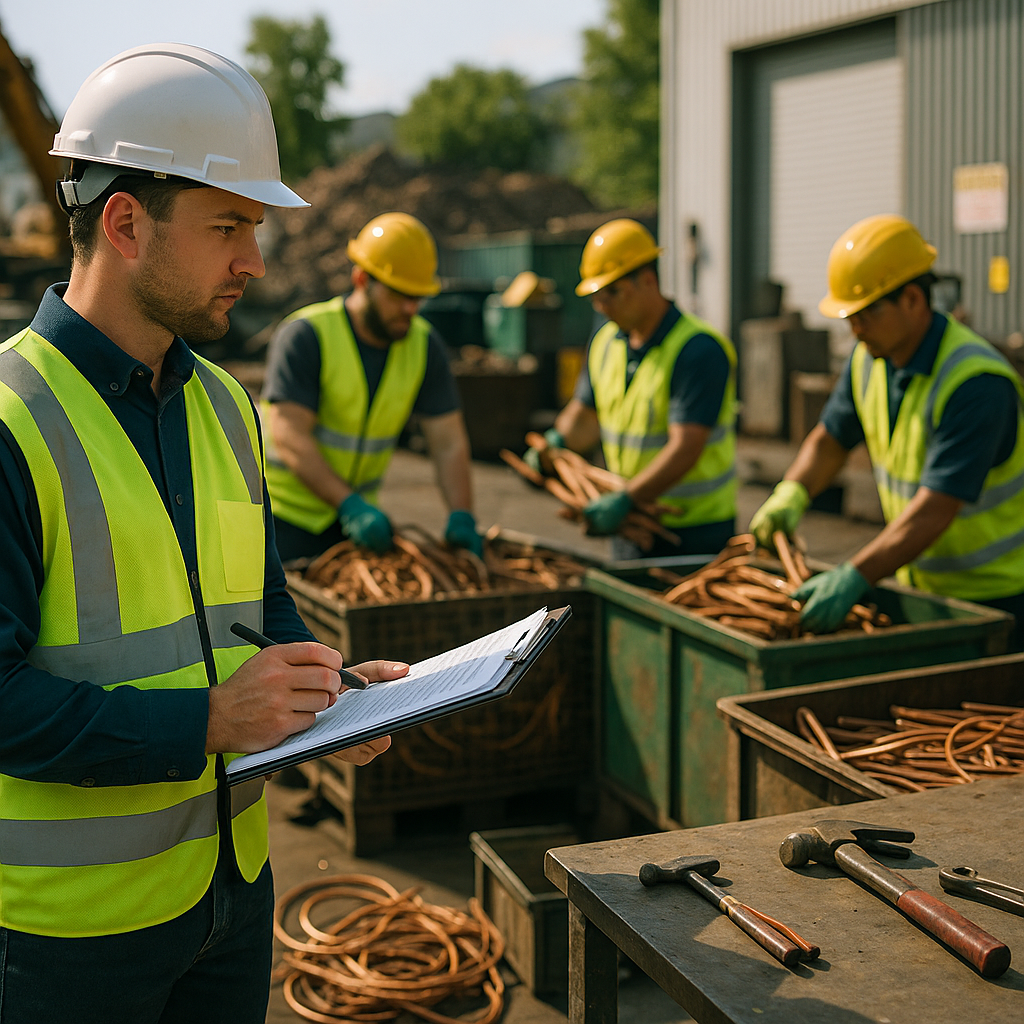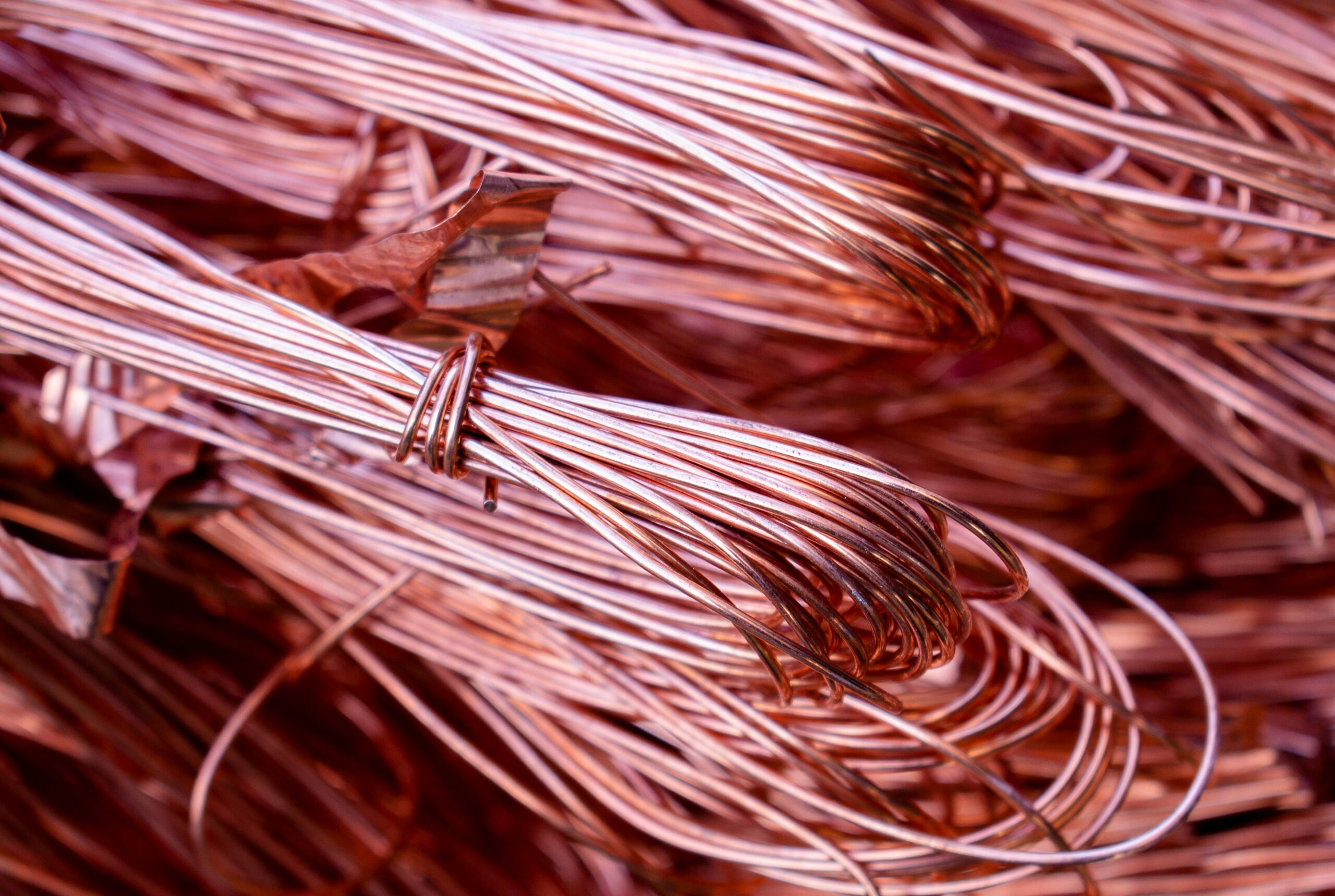5901 Botham Jean Blvd, Dallas, TX 75215
What Are Copper Wire Recycling Best Practices?
May 13, 2025Copper wire recycling is crucial for both environmental stewardship and economic gain. As one of the most valuable recyclable metals, copper wire provides significant benefits when properly recovered from waste streams. This bright, reddish metal retains its properties indefinitely, making it infinitely recyclable without losing quality.
Effective copper wire recycling involves methodical approaches to collection, processing, and recovery. These practices ensure maximum resource conservation while generating economic value. They include strategic techniques that separate copper from insulation, minimize contamination, and prepare the material for reintroduction into manufacturing.
The growing demand for copper in electronics, construction, and renewable energy sectors makes efficient recycling increasingly important. By implementing proven best practices, recycling operations can recover up to 90% of energy compared to mining new copper ore. This significant energy reduction leads to lower carbon emissions and reduced environmental impact.
What Are the Common Methods for Recycling Copper Wire?
Copper wire recycling uses several distinct methods to extract valuable copper from insulated wires. Each technique has specific advantages depending on the volume and type of copper wire being processed.
Stripping
Stripping involves manually or mechanically removing the outer insulation from copper wires. This method is effective for thicker gauge wires with accessible insulation. Wire stripping tools range from simple handheld devices to automated machines for larger operations.
Manual stripping is labor-intensive but requires minimal investment. Mechanical strippers increase efficiency and are suitable for processing moderate volumes of wire with consistent dimensions.
Chopping
Wire chopping lines cut copper cables into smaller, uniform pieces. Modern systems combine multiple processing stages for comprehensive material handling. The process begins with size reduction through pre-choppers.
Chopping enhances subsequent separation processes, making it easier to handle large volumes of mixed wire types. This method prepares materials for granulation or other downstream recycling processes.
Shredding
Shredding further reduces wire segments into smaller pieces. Industrial shredders use powerful cutting blades to process various wire gauges simultaneously. This method handles wires with different insulation materials.
Proper shredding creates uniformly sized particles, improving downstream separation efficiency. Shredders often serve as an intermediate step before granulation.
Granulating
Granulating is the most advanced copper wire recycling method. Copper wire granulators transform shredded materials into fine particles, separating copper granules from plastic insulation.
These machines contain multiple components working together. Feed hoppers receive prepared wire segments, and precision cutting blades create uniform granules. Screens determine the final particle size for optimal separation.
Copper wire granulators deliver exceptional recovery rates of high-purity copper. The technology efficiently processes waste cables of various types. Modern units incorporate advanced separation capabilities that maximize material recovery.
| Method | Efficiency | Cost | Application |
|---|---|---|---|
| Stripping | Moderate | Low | Thicker gauge wires |
| Chopping | High | Moderate | Mixed wire types |
| Shredding | High | Moderate | Various wire gauges |
| Granulating | Very High | High | High-purity copper recovery |
The granulation process offers significant environmental and economic benefits. It reduces the need for virgin copper extraction and consumes less energy than primary production methods. Materials recovered through granulation meet quality standards for manufacturing new products.
Proper preparation enhances granulation effectiveness. Removing non-metallic attachments and contaminants ensures machine longevity. Clean input materials produce higher quality copper output. Quality control checks throughout the process maintain consistent results.
What Are the Environmental Benefits of Copper Wire Recycling?
Copper wire recycling offers significant environmental benefits by greatly reducing energy consumption. Recycled copper requires up to 85% less energy than mining and processing new copper. This efficiency directly results in lower greenhouse gas emissions and a reduced carbon footprint for the metal industry.
Mining copper is among the most environmentally disruptive industrial processes. Open-pit copper mines can cover vast areas—the Escondida mine in Chile spans over 39 square miles, more than twice the size of Manhattan. These operations cause extensive landscape scarring, habitat destruction, and ecosystem damage that often cannot be reversed.
Water conservation is another critical environmental benefit. Copper mining releases sulfuric acid and heavy metals that contaminate local water supplies. In regions like Zambia’s Copperbelt, this contamination has led to long-term health crises for entire communities. Recycling copper eliminates these risks by keeping harmful chemicals out of soil and water systems.
Resource preservation is perhaps the most compelling reason for copper recycling. At current consumption rates, the world’s economically viable copper reserves could be depleted within 50-60 years. Every ton of recycled copper means one less ton that needs to be extracted from the earth, extending the lifespan of this finite resource for future generations.
Copper’s infinite recyclability makes it ideal for circular economy models. Unlike many materials that degrade during recycling, copper retains 100% of its properties no matter how many times it is processed. This means copper can be recycled repeatedly without any loss in quality or performance, creating a truly sustainable material cycle.
Waste reduction is another significant environmental advantage. Recycling diverts copper from landfills, reducing waste volume and preventing potential environmental contamination. This is especially important for electronic waste, which contains valuable copper components alongside toxic materials.
The environmental benefits extend beyond direct impacts. By reducing dependence on mining, copper recycling helps preserve biodiversity in mineral-rich regions that would otherwise face exploitation. It also contributes to more stable ecosystems by minimizing soil erosion and preventing the disruption of natural water systems.
Despite these substantial benefits, only about 34% of the world’s copper supply comes from recycling. Increasing this percentage could significantly reduce industrial pollution while ensuring a more sustainable future for this essential metal.
What Regulations and Best Practices Ensure Ethical Copper Recycling?

The copper recycling industry operates under regulations that promote sustainability and prevent environmental harm. These guidelines ensure responsible handling of this valuable metal throughout its lifecycle.
Permits and Licensing Requirements
Most jurisdictions require scrap metal recycling companies to obtain specific permits and licenses to operate legally. These authorizations help authorities monitor activities and ensure compliance with environmental standards.
Companies must maintain accurate records of all copper transactions. This documentation is crucial for preventing theft and tracking material flows within the recycling ecosystem.
Proof of Ownership and Anti-Theft Measures
To combat metal theft, many regions require proper identification from sellers. Recyclers must verify and record the identity of anyone selling copper scrap.
Regulations often mandate waiting periods before processing certain copper materials, allowing authorities time to identify potentially stolen goods and investigate suspicious transactions.
Payment restrictions are another regulatory tool. Some jurisdictions prohibit cash payments for copper transactions above specific thresholds to create a paper trail and discourage theft.
Environmental Compliance Standards
Copper recycling facilities must adhere to strict air and water quality standards, limiting pollution from melting and processing activities.
Proper waste management protocols are mandatory to handle byproducts, preventing harmful substances from contaminating soil or water sources.
Energy efficiency requirements encourage recyclers to minimize their carbon footprint. Since recycled copper uses up to 85% less energy than mining new copper, these standards enhance environmental benefits.
Industry Best Practices
Beyond compliance, ethical copper recyclers implement additional best practices. Advanced sorting technologies maximize material recovery and reduce waste.
Responsible companies invest in worker safety training and proper equipment to protect employees from hazards associated with processing copper materials.
Transparent supply chain documentation demonstrates a commitment to ethical sourcing, allowing downstream customers to verify legitimate material sources.
International Standards and Certification
Global sustainability frameworks provide guidelines for responsible metal recycling, harmonizing practices across regions and promoting consistent environmental protection.
Third-party certifications validate ethical recycling practices, giving customers confidence that recyclers meet established sustainability criteria.
International cooperation in combating illegal copper trading helps ensure legitimate recycling operations. Cross-border initiatives track material flows and identify potential regulatory violations.
| Region | Primary Focus Areas |
|---|---|
| World | Dynamic models for copper stocks and flows |
| China | Improved copper recycling rates |
| Japan | Advanced copper recovery technologies |
| EU28 | Policy frameworks for copper recycling |
| Latin America | Increasing end-of-life recycling rates |
| North America | Collaboration in copper recycling policies |
Economic Incentives for Ethical Recycling
Many governments provide tax benefits for compliant recycling operations, encouraging businesses to invest in proper equipment and procedures.
Grants and subsidies support the development of advanced recycling technologies, helping companies improve recovery rates and reduce environmental impact.
Consumer preference for ethically sourced materials creates market advantages for responsible recyclers. Companies demonstrating environmental stewardship often attract more business and command premium prices.
Conclusion: Embracing Effective Copper Wire Recycling Practices

Effective copper wire recycling is a key component of sustainable resource management today. This article has highlighted how proper recycling conserves natural resources, reduces energy consumption by up to 85% compared to mining new copper, and minimizes environmental damage from extraction. The economic benefits are equally compelling, with recycled copper maintaining high value in global markets and supporting jobs in the recycling sector.
By implementing best practices—from proper sorting and insulation removal to investing in efficient processing equipment and following environmental regulations—organizations can maximize both the environmental and economic benefits of copper recycling. These practices support a circular economy where valuable materials are reused rather than discarded. For expert guidance on responsible copper recycling solutions, contact Okon Recycling at 214-717-4083.
